Erez Nevi Pana designs banana-plant "cocoons" for humans to shelter from climate change
Vegan designer Erez Nevi Pana uses home-grown materials to create cocoon-like shelters for people living in an imaginary tropical version of Milan, which has an unfamiliar climate due to global warming.
The shelters have each been made from vegan and sustainable materials, and feature in a film made by the designer. Both elements make up an installation by Nevi Pana called Tropical Milan.
The installation imagines a future city that has been transformed into a jungle-like climate due to rising temperatures and sees its inhabitants take refuge in woven bags and hammocks made from banana fibres.
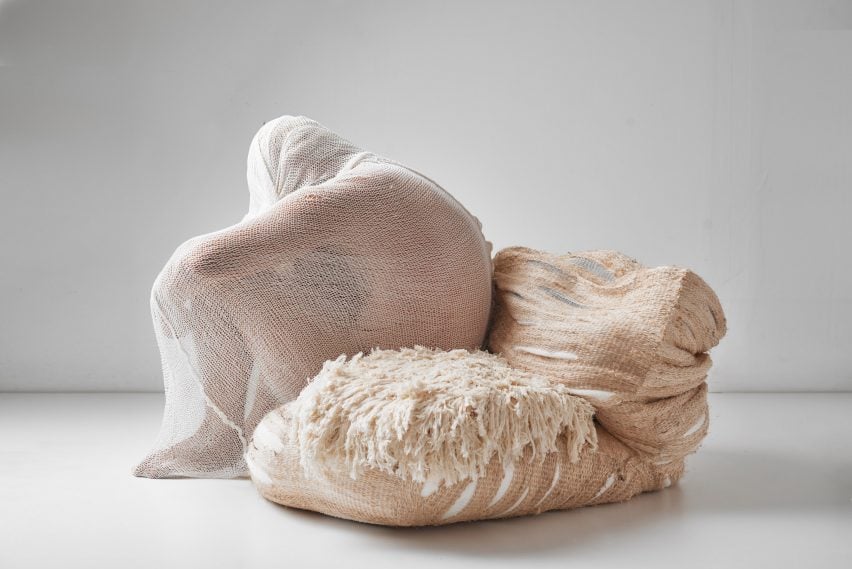
After creating a series of vegan furniture items for a show during Milan Design Week 2018, the designer wanted to go a step further and grow his own ingredients in order to "gain total control over them".
"When coming back from Milan after the vegan show, I was looking at all the materials that I've used and shared with the world – yes, they were vegan, but with most of them I couldn't trace back their origins," he told Dezeen.
"I was thinking that if I want my objects to be 100 per cent pure vegan, I have to be responsible for their full-cycle and growth."
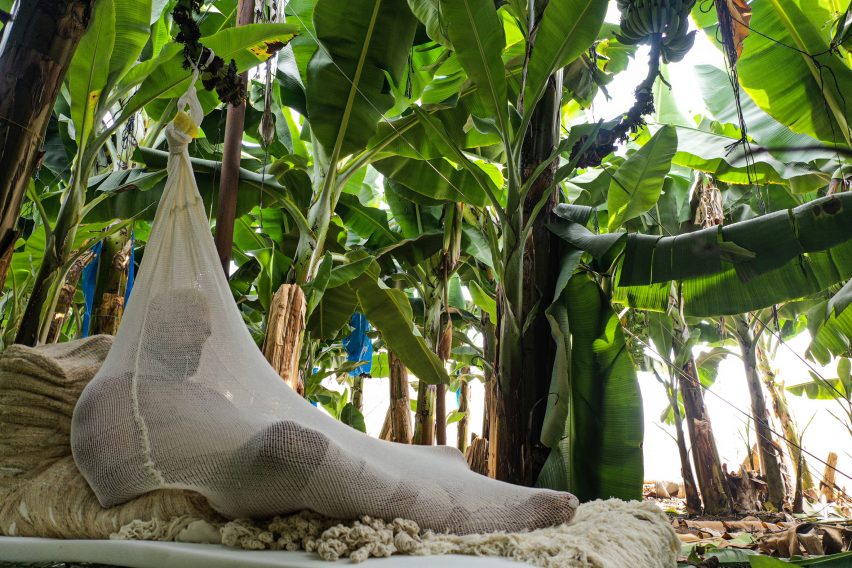
For the project, Nevi Pana imagines banana plants as the only crop being produced in the region. As a result, he created three objects made from materials, such as banana fibre, that he grew himself.
These include the Vegana Banana Bag Chair made of banana fibre, the Tropical Banana Rocking Chair made of banana fibre and net, and the Steamy Banana Hammock made of banana fibre and luffa – a tropical vine vegetable from the cucumber family.
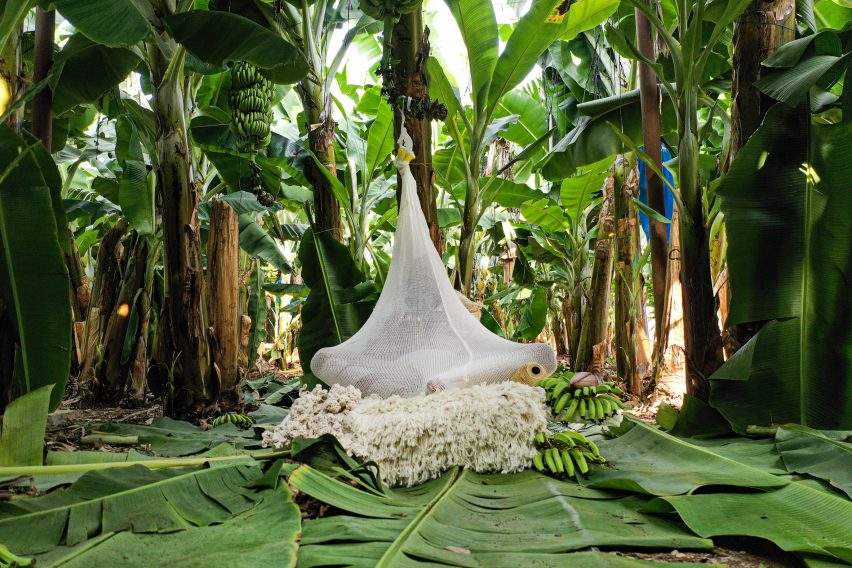
Each of the "cocoons" feature in an hour-long film written and directed by Nevi Pana, and filmed by Ofer Kantor, which aims to highlight the potential consequences of climate change.
The objects and film are also on show in an installation, curated by Maria Cristina Didero, in Milan's 5 Vie district, which opened on 28 September and will remain open to view until 10 October 2020.
The film records a person – whose face is not shown in order to be more inclusive – encased in Nevi Pana's bag-chair and hammock designs, reclining on a forest floor in an apocalyptic world.
Another shot shows the figure, who is cloaked in the banana-fibre material, raised up and reaching to the top of one of the trees.
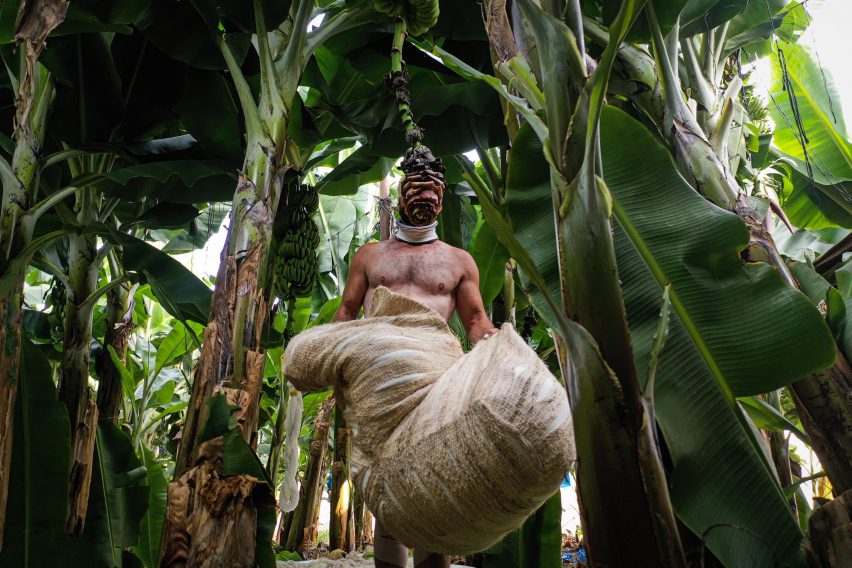
The model is situated in a jungle-like setting, surrounded by a forest of banana plants, which Nevi Pana suggests is representative of the city centre of Milan.
As the designer explains, in this environment, the human is being forced to confront conditions of extreme humidity, a mosquito invasion and "the dramatic results of wrong monoculture".
The latter includes single crop production, for which he uses the example of banana trees, which results in limited food supplies, poverty and global mass migrations.
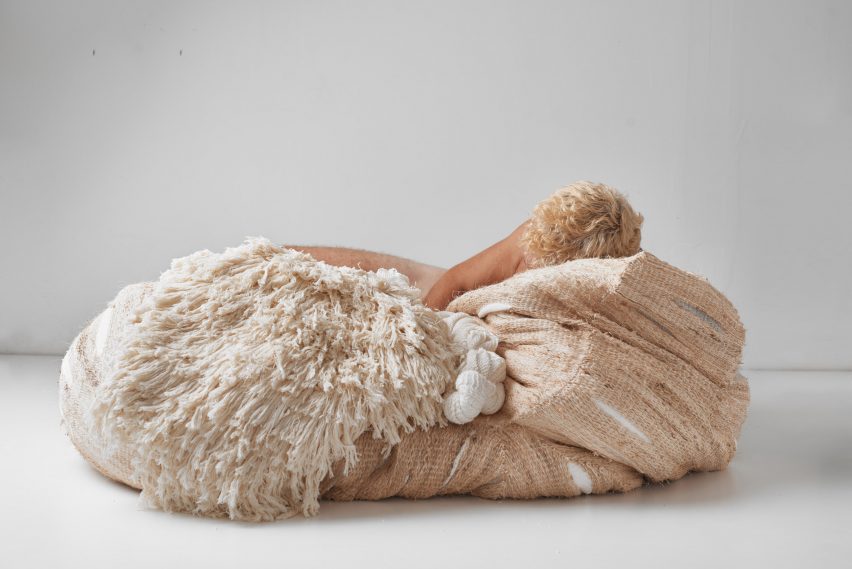
The film has a soundtrack of contemporary trance music by Berlin-based artist Gorovich, which aims to create a sense of "imminence and urgency".
"The visual and the sound seem detached from each other, they hint at our disconnection, living in a trance – a state of unconsciousness," Nevi Pana told Dezeen.
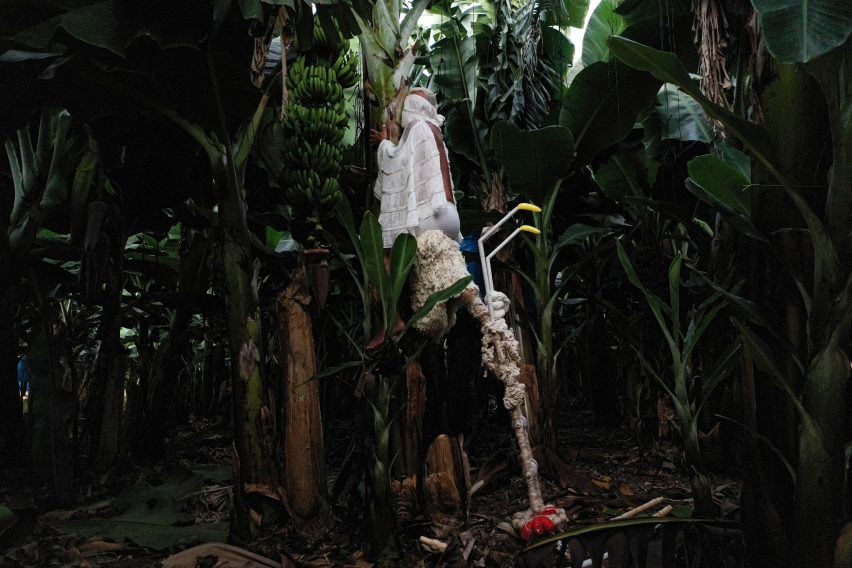
"As we see in Nevi Pana's movie, humanity is forced to slow down, stay still, breathe differently, and protect themselves by turning into cocoons – also made here with fully sustainable homegrown fibres," said Didero.
"The man in the film... sleeps, tragically referring to the state we are living in today," she continued.
"Instead of waking up and doing something for all of us, for himself, for our planet, he is acting blindly and way too slowly; he awaits something to happen, and that is how we will end up sooner than we think in such an inhospitable environment".
"We don't want to reach this point," the curator added. "We know it is late, but much can still be done, otherwise the banana trees planted a few years ago in Piazza Duomo won't be just a decoration any longer. Climate change is real and is happening because of our behaviours."
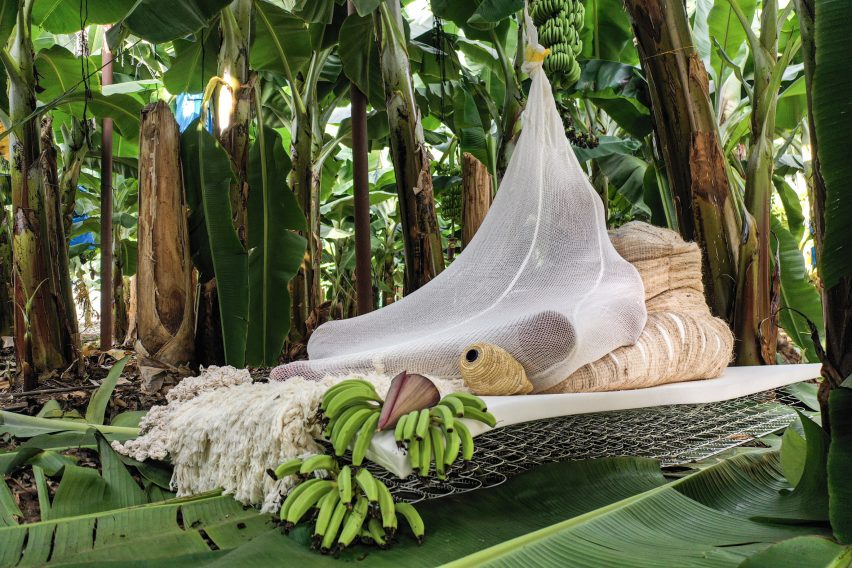
Nevi Pana is not the only designer to reimagine European cities as tropical locations due to climate change.
Studio Weave built an arched greenhouse as part of this year's London Design Festival, which it filled with plants that it predicts will soon be able to grow outdoors in the UK due to global warming.
"The idea is to show the types of plants that we will be able to easily grow in our gardens by 2050," said Studio Weave director Je Ahn.
Photography is by Dor Kedmi and Ofer Kantor.